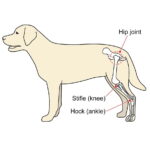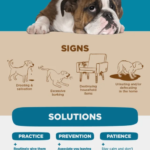How Long Can Dogs Live With Cancer
Canine Cancer: How Long Can Dogs Live with This Dreaded Disease?
Dogs are beloved family members for millions of people worldwide. They bring joy, comfort, and companionship to our lives. However, dogs, like humans and other animals, can get sick, including cancer. Cancer is a group of diseases characterized by the uncontrolled growth and spread of abnormal cells in the body. Cancer can affect any part of the body, such as bones, blood, skin, organs, and tissues. Cancer can also vary in severity, from benign tumors that stay in one place to malignant tumors that invade nearby tissues and organs or metastasize to distant sites.
If you have a dog diagnosed with cancer or suspect cancer symptoms in your dog, you may wonder how long your pet can live with this disease. The answer depends on many factors, such as the type of cancer, the stage of cancer, the location of cancer, the size of cancer, the age and health status of your dog, and the treatment options available.
Let’s explore some common types of canine cancer and their prognosis:
1. Skin Cancer:
Skin cancer is one of the most common types of cancer in dogs. It can manifest as a lump or bump on the skin that grows rapidly or slowly. Skin cancer can be benign or malignant. Benign tumors are usually harmless and do not spread to other parts of the body. Malignant tumors are more dangerous and can metastasize to lymph nodes or other organs.
The most common skin cancers in dogs are mast cell tumors (MCT), squamous cell carcinoma (SCC), melanoma, and hemangiosarcoma (HSA). Mast cell tumors account for about 20% of all skin tumors in dogs. SCC is a type of skin tumor that often affects white-haired dogs exposed to sunlight. Melanoma is a type of skin tumor that affects pigmented cells and can occur in the mouth, eyes, and paws. HSA is a type of malignant tumor that affects blood vessels and can cause internal bleeding.
The prognosis for skin cancer depends on the type, stage, and location of cancer. Early detection and surgical removal of tumors can increase the chances of cure or long-term survival. Depending on the case, your vet may recommend additional treatments such as chemotherapy, radiation therapy, or immunotherapy. However, some types of skin cancer are more aggressive and have a poorer prognosis, especially if they metastasize to other organs.
2. Bone Cancer:
Bone cancer is a rare but severe form of cancer in dogs, especially large breeds such as Great Danes, Irish Wolfhounds, Rottweilers, and Greyhounds. The most common type of bone cancer in dogs is osteosarcoma (OSA), which affects the long bones such as legs or arms. OSA is an aggressive tumor that often causes pain, swelling, and lameness in affected limbs. OSA can metastasize to lungs or other bones and quickly spread throughout the body.
The prognosis for OSA is generally poor, with only about 10-20% of cases surviving more than one year after diagnosis. However, amputation of the affected limb followed by chemotherapy can improve survival time and quality of life in many cases. Other treatment options include radiation therapy or immunotherapy.
3. Lymphoma:
Lymphoma is a type of cancer that affects lymphocytes, which are white blood cells that help fight infections and diseases. Lymphoma can affect various organs such as lymph nodes, spleen, liver, bone marrow, and gastrointestinal tract. Lymphoma accounts for about 7-24% of all cancers in dogs.
The most common type of lymphoma in dogs is multicentric lymphoma, which affects multiple lymph nodes throughout the body. Multicentric lymphoma can cause swelling, lethargy, and weight loss in dogs. Other types of lymphoma include alimentary lymphoma, which affects the digestive system, and mediastinal lymphoma, which affects the chest area.
The prognosis for lymphoma varies depending on the type, stage, and response to treatment. Lymphoma is generally responsive to chemotherapy and can achieve remission in many cases. The median survival time for dogs with multicentric lymphoma treated with chemotherapy is about 12 months. However, some types of lymphoma are more challenging to treat or have a poorer prognosis.
4. Hemangiosarcoma:
Hemangiosarcoma (HSA) is a type of cancer that affects blood vessels and can occur in various organs such as spleen, liver, heart, or skin. HSA can cause internal bleeding and sudden collapse in affected dogs. HSA accounts for about 5-7% of all cancers in dogs.
The prognosis for HSA is generally poor due to its aggressive nature and tendency to metastasize quickly. Surgery to remove the affected organ followed by chemotherapy can improve survival time and quality of life but does not guarantee a cure. Dogs with HSA may require emergency care if they develop signs of internal bleeding.
5. Other Types of Cancer:
Other types of cancer that can affect dogs include mammary gland tumors (breast cancer), prostate cancer, bladder cancer, brain tumors, oral tumors, and soft tissue sarcomas. The prognosis for these cancers depends on the type, stage, location, and response to treatment.
In general, early detection and treatment are critical factors in improving the chances of survival and quality of life for dogs with cancer. Regular check-ups with your vet, especially as your dog ages, can help detect any health issues early on before they become more severe.
Conclusion:
Cancer is a complicated disease that affects millions of dogs worldwide. The prognosis for dogs with cancer depends on many factors, including the type, stage, location, and response to treatment. Some types of cancer are more aggressive and have a poorer prognosis than others. However, with proper diagnosis, treatment, and care, many dogs can live for months or even years with cancer.
As a pet owner, it’s essential to educate yourself about the signs and symptoms of cancer in dogs and seek veterinary help promptly if you suspect any issues. Remember that your dog relies on you to provide love, comfort, and support during challenging times. Be there for them as they have been there for you throughout their life.



